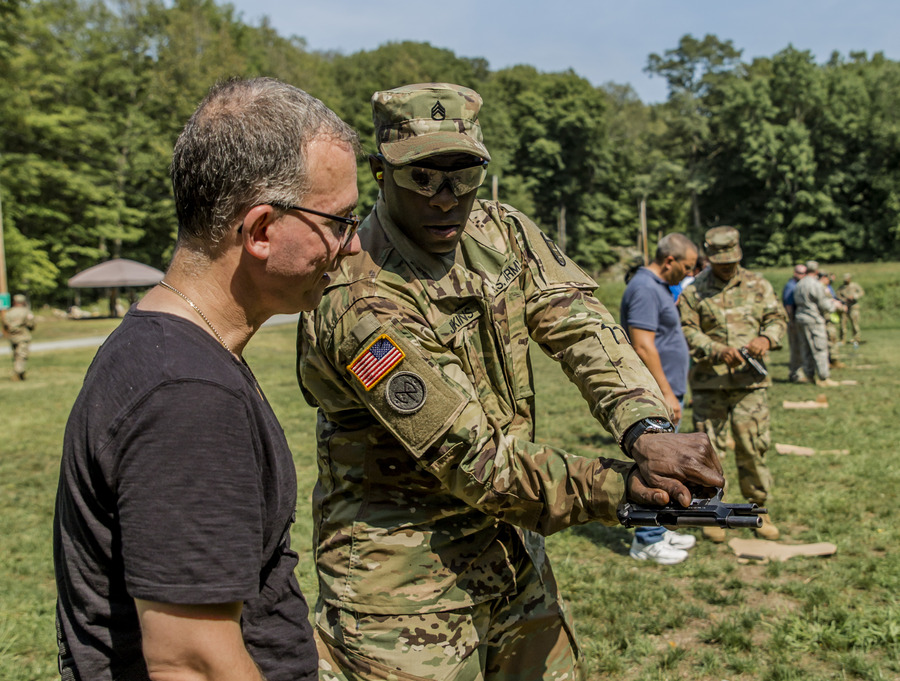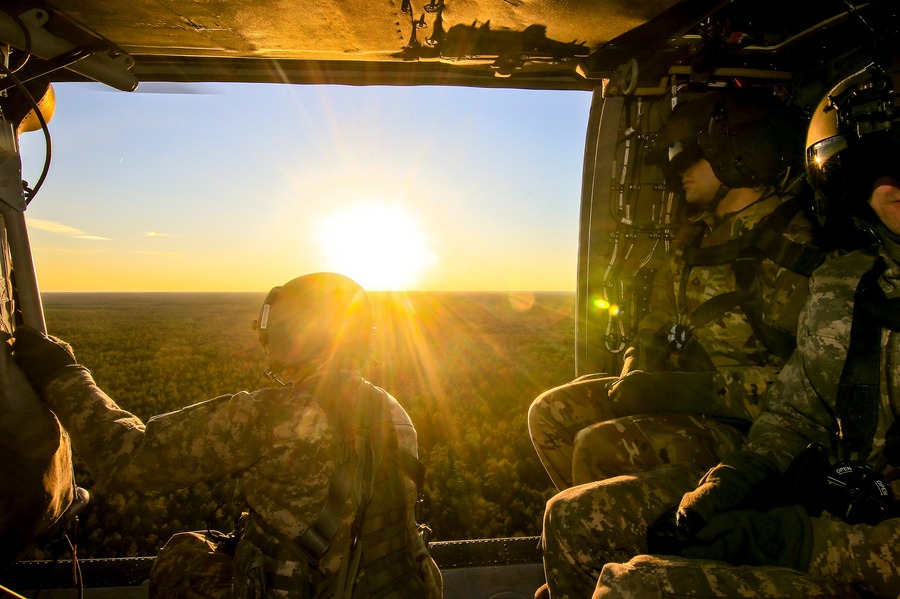Domestic Policing Deployment and Public Trust in the Military

Published by The Lawfare Institute
in Cooperation With

Editor’s Note: This essay is part of a series on the limitations, drawbacks, and dangers of domestic deployments, from Lawfare and Protect Democracy.
As right-wing populism has risen in many ostensibly mature democracies, it has led to protest, political violence, contested elections, and general weakening of norms of democratic process. In many cases, leaders have used or threatened to use the military to address domestic unrest or even regular crime. This trend—and an upcoming election in the United States—raise several concerns for the near future: Will there be more fraught demonstrations? Political violence? Will political leaders try to use the regular military and/or the National Guard for more domestic missions? And how can the civilian government and the military promote public peace and safety while safeguarding the rights of Americans?
Domestic use of the military is sometimes necessary and appropriate. But the military should never be used domestically without careful consideration of the costs and benefits. One important factor is how such uses affect public trust and civil-military relations.
Reps. Elissa Slotkin (D-Mich.) and Mikie Sherrill (D-N.J.) recently wrote a letter to U.S. Secretary of Defense Lloyd Austin and Chairman of the Joint Chiefs of Staff C. Q. Brown, asking them to “reaffirm that U.S. law prohibits forces from being used for civilian law enforcement and that they should not carry out unlawful orders.”
The problem with this approach is that, while legal constraints on the domestic uses of the military do exist, there are still multiple ways in which the military can be used legally—but imprudently—for domestic purposes.
A president considering the use of the military for domestic policing purposes should exercise restraint at all levels. Compliance with legal constraints is necessary but not sufficient. Moral, political, and organizational considerations must also be front of mind.
New data that I gathered with two of my colleagues show that the U.S. public prefers that the police and sometimes the state-controlled National Guard—rather than the military—carry out domestic law enforcement and disaster interventions. The data also indicate that the public prefers that any interventions, regardless of who carries them out, be unarmed and aimed at logistical support rather than order maintenance. In short, the public prefers restraint.
Restraint
In the context of responding to domestic political unrest or violence, “restraint” could mean a few different things. Here, there are two relevant meanings: a president’s decision about which personnel and agencies to deploy, and the president’s and other policymakers’ and commanders’ decisions about which tactics and rules for the use of force to employ.
In the first case, “restraint” would refer to the president choosing to rely on or deploy less militarized personnel and agencies over more militarized ones. A president who does not get federal personnel involved at all and relies on local and state law enforcement and members of the National Guard would be exercising the most “restraint” in this sense. The first rung of the escalation ladder might be deploying federal law enforcement agents, then federalizing and deploying the National Guard, then deploying active-duty military personnel.
A president could certainly mobilize some federal personnel to support and assist those state and local agencies without “escalation,” so long as the federal personnel were not visible in the immediate area. But a president can also act with “restraint” or not with respect to the choice of tactics, equipment, uniform, and rules for the use of force.
Here, we are looking at what law enforcement, the National Guard, and the military would call arming orders (whether to carry firearms or not and how to carry them), weapons conditions (whether the firearm has a loaded magazine inserted or not, whether a round is chambered or not, etc.), and other equipment such as shields, batons, armored vehicles, or aircraft. Rules for the use of force (RUF) differ for law enforcement from one jurisdiction to the next, for the National Guard from one state to the next, and for federal law enforcement officials from one agency to the next. What counts as restraint here depends at least in part on the character of the unrest being policed. Some responses might qualify as restrained if deployed against something like Jan. 6, but not if deployed against a mostly peaceful protest involving some graffiti on a federal building.
The point in all of this is that there are multiple choices to be made in any situation of domestic unrest where decision-makers can choose more or less restrained responses, leaving themselves more or less room to escalate. The president may make some of these decisions, but many will be made at lower levels. The decisions made at lower levels will be informed by lower-level officers’ understanding of the president’s intent, which is why the president’s rhetoric also matters.
This discussion implies a sort of matrix of choices: Various agents could be deployed at various levels of tactics, equipment, and RUF. Below are some of the considerations involved in each choice, and how they may interact.
Public Support for Restraint in the Domestic Use of the Military
Many policymakers and defense pundits assert that the U.S. military should not be used for domestic missions because the populace will object and will likely lose trust and confidence in the military as a result. But until recently, we had scant data on how the U.S. public’s confidence in the military is affected by domestic deployments, and little to no data on how the public views the legitimacy or appropriateness of such domestic uses. In a recently published article, Jessica Blankshain, Danielle Lupton, and I offer the first examination of data from the U.S. public on these issues.
In the summer of 2020, my colleagues and I fielded a conjoint survey experiment—a form of survey experiment where we vary multiple elements of a scenario at once, rather than varying only one element, as in a classic experiment. This allows us to capture how people feel about situations where lots of potentially important factors are present rather than isolating them one at a time, which is less realistic. (The downside to conjoint research is that it can yield only relative rather than absolute values.)
In this experiment, participants read a series of vignettes, in which they were told about hypothetical government responses to hypothetical incidents. These vignettes varied on four dimensions: the type of incident requiring response, the type of actor responding (and the authority deploying that actor), whether the response was order maintenance (for example, crowd control) or simply logistical support (such as delivering water), and whether the responding actor was armed or unarmed. The incidents were a category 5 hurricane, a Black Lives Matter (left) protest, a Reopen America (right) protest, a terrorist car bomb threat, and an outbreak of a deadly and contagious disease. The actors were “the police” (deployed by the mayor), “state-controlled National Guard personnel” (deployed by the governor), “the military,” and “active duty military personnel” (both deployed by the president). Respondents read three vignettes, in which each of these factors was varied at random, and then answered a number of questions about how legitimate or appropriate they thought the response was, how effective they thought the response would be, and how they generally felt about the response.
We found that, in general, the U.S. public prefers using the police and National Guard to the military for domestic operations. This was particularly true for events like political protests, where approval of using the military was significantly lower than for using the police—even in a context where police brutality was specifically at issue. For a traditional security threat like a terrorist car bomb, by contrast, the public approved of all actor options almost equally, indicating more acceptance of deploying the military in such situations than against normal crime or protest. Respondents clearly preferred the National Guard to all other options for a hurricane response and were more approving of both the National Guard and the “active duty military” (than the police) in response to a pandemic. Republicans were significantly more likely than Democrats to support using the National Guard or the military and were also more likely to support interventions of any kind in response to political protests.
Perceptions of legitimacy tracked with approval. When viewed together, these data indicate that the U.S. public is uncomfortable with deploying the regular military and even the National Guard to deal with things they do not perceive as either traditional security threats or natural disasters. That being said, it is important to note that our research cannot define when the public stops viewing an incident as political activity and starts viewing it as a traditional security threat, nor can we glean from our data what people are likely to do in response to what they view as an illegitimate use of the military. But it is important to recognize that the public generally would prefer not to see the military deployed domestically so long as there are other options available.
Public Support for Tactical Restraint
But whether the political leadership feels they must use the military and National Guard or not, they must still make choices about what type of intervention to conduct, and here, again, we have evidence that the U.S. public prefers less militarized, more restrained actions.
Our survey found that the public generally prefers interventions when they provide logistical support and are unarmed, rather than when they aim to promote order maintenance and are armed. The exceptions to this were for the car bomb threat, which is to be expected, and for the Black Lives Matter protest, which is more surprising. Again, Republicans were significantly more likely than Democrats to prefer order maintenance and armed interventions, regardless of the type of event.
Our results track with other research that also finds that parts of the U.S. public view order maintenance policing tactics as illegitimate and object to armed interventions. Other research also shows that the presence of more militarized equipment tends to lead to more violence. This is true whether we are looking at political activity or regular criminal activity. Having armed personnel present almost always increases the chances of accidental escalation, so lower levels of armament, weapons conditions, and less aggressive RUF are generally less escalatory.
For these reasons, political leaders should want to exercise restraint in terms of the tactics they employ, partly because restraint is more likely to help them win the public relations battle, and partly because it is safer for everyone.
Consequences of Domestic Military Interventions That Lack Public Support
There are many broad civil-military relations reasons why using militaries for domestic policing should be a last resort. One set of these is the likely effects of such interventions on public trust in the military and on the health of the military as an organization.
One of the standard warnings about using the military for domestic policing and other missions is that it may affect public trust in the military. In the U.S., we need not fear a general collapse in public trust but, rather, a heightening of an already-alarming trend: that confidence in the military is a partisan issue.
This is dangerous for several reasons: First, it damages recruiting efforts, both in terms of who does and does not want to join and the reasons for which they want to join. Second, it complicates service members’ ability to act as trusted advisers to policymakers, who may be concerned that officers may have partisan loyalties, incentives to leak or misrepresent administration policy discussions, or even a desire to undermine the administration. Third, it creates serious problems of morale, cohesion, and effectiveness within the organization when people inside and out view the institution as a partisan tool.
These last two issues are connected to another common negative outcome: Militaries that are used frequently for domestic interventions begin to see themselves as having competency in domestic policy and may try to shape such policies. Most militaries do not want to do domestic policing operations (for the cohesion and morale reasons mentioned above). Those that are pulled in frequently, or that fear they will be pulled in frequently, may therefore try to influence public policies that they believe will lead to unrest, in order to avoid having to police it. This undermines democratic governance and the normal political system, even if it is motivated by a desire to avoid political violence.
It is worth looking more closely at the organizational implications of these domestic interventions, too. The U.S. military particularly dislikes and argues against domestic missions, and it is not a criticism of their loyalty or professionalism to say that this means the civil authorities must also calculate how the military is likely to respond to such orders. Service members are likely to feel significantly more internal conflict about such a role than about a foreign deployment, increasing their risk of moral injury.
A domestic deployment increases levels of uncertainty about the purpose the military personnel are supposed to serve: Is their mere presence meant to be a deterrent? What happens if deterrence is unsuccessful?
Escalation from the law enforcement side makes the entire situation more dangerous for everyone, not just in the sense of possible injuries from military and law enforcement personnel, but also from trampling, crushing, and retaliation against military and law enforcement. This sort of danger to life and limb makes breakdowns in discipline more likely. Tactical restraint requires training, self-discipline, and cohesion—it is not simple or easy to exercise. But it’s the proper approach, in part because aggressive or escalatory tactics are more likely to lead to organizational breakdown than are restraint tactics.
When Military Intervention Makes Sense to the Public
It is important to note that restraint is not a good in and of itself. Any solid strategist will tell you that threats and applications of force must be carefully calculated to achieve effective coercion. Either too much or too little can lead to coercive failure. That is why this conversation about the appropriate uses of force happens at all: If either overwhelming force or no force at all always worked, there would be no hard choices to make. Presidents and other policymakers must determine what they want to achieve, and what those involved in the unrest want to achieve, in order to calculate what kind of response has the best chance of success.
Are there some reasons to think that using the military might be better than using police or other law enforcement entities? Yes. But nearly all of them have to do with wanting to limit violence rather than to employ it.
First, sometimes the presence of the military (as opposed to law enforcement) can act as a deterrent to violence. People who are less organized, less prepared, and more opportunistic are somewhat more susceptible to the deterrent effects of seeing military personnel in good order. However, there are several reasons why this is a very fine line: The military’s deterrence value needs to be calculated against its possible negative consequences, such as potentially being provocative, and/or damaging the public’s view of the administration or the military. Furthermore, if there are actors involved who are more organized and prepared, they are less likely to be deterred, and more likely to be interested in provoking a violent response for the propaganda value. Thus, a president must consider what kind of unrest to expect before deciding which personnel are best positioned to respond.
Second, there is some empirical evidence from the U.S. historical record to suggest that active-duty military personnel may in fact have better fire discipline than some law enforcement groups. But the above concerns about provocation still apply.
***
The legal and military professional consensus is that the military should be used for domestic law enforcement and response to civil unrest only as a last resort. Ideally, a democratic society works to avoid political violence by seeking to maintain broad legitimacy. Sometimes that fails, and sometimes the response must be large scale and capable of the use of organized force. But policymakers should always seek deescalation, and in most cases that means exercising restraint.





